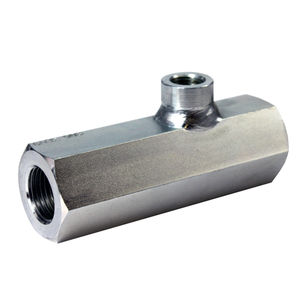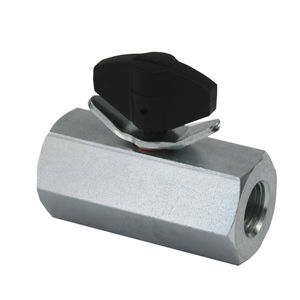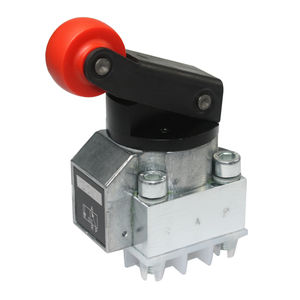
Hydraulic valve 700-30for controlseatpump
Add to favorites
Compare this product
Characteristics
- Operation
- hydraulic
- Function
- for control
- Body
- seat
- Applications
- pump, gauge
- Associated function
- reducing, outlet
- Pressure
500 bar
(7,251.9 psi)- Flow rate
10 l/min
(2.64 us gal/min)
Description
Pressure reducing valves
Pressure reducing valves are ideal for the application in static leak-oil free clamping systems, which are decoupled by a pressure pump unit. The function of the pressure reducing valve is to maintain the outlet pressure A on the consumer also with variable, always higher supply pressure P constant.
Once the supply pressure equals the adjusted outlet pressure, a check valve completely blocks the oil flow. Therefore, the pressure can not increase any more. Until the adjusted outlet pressure is acquired, the hydraulic oil can easily flow from P→A through the valve. A pressure spring opens the oil flow against the supply pressure, as soon as the outlet pressure, eg. due to the consumer, decreases. This makes the hydraulic oil flow until the initial pressure is acquired again.
Since this pressure reducing valve does not have a leak-oil port, an supply pressure rise might not be compensated. Reasons for such an unwanted pressure rise can be for example: warming, external influences, effects by foreign matter (chips) in the valve seat etc. Overload balance is not possible due to this pressure reducing valve version.
HYDROKOMP recommends installing a pressure reducing valve between the valve and the consumer. The opening pressure adjusted for the pressure reducing valve may not exceed the max. permissible operating pressure of the consumer. If possible, it should be approx. 10% above the outlet pressure. The outlet pressure can be adjusted by a pressure gauge which also allows the visual control of the outlet pressure.
*Prices are pre-tax. They exclude delivery charges and customs duties and do not include additional charges for installation or activation options. Prices are indicative only and may vary by country, with changes to the cost of raw materials and exchange rates.








